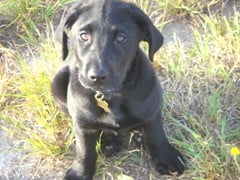
Car of the future or vaporware?
One of the wildest cars at the Geneva Motor Show, the Nanoflowcell Quant e-Sportlimousine is a research prototype that's powered by salt water. More accurately, it's powered by a flow battery that uses a special formula of ionic charge-carrying salt water as its storage medium. Not content to just electrify an average powertrain, Nanoflowcell uses its technology to send 912 horses into an all-out frenzy of spinning, smoking rubber.
We now have a clearer picture of Nunzio La Vecchia's energy and supercar ventures than we did when we covered the Quant teaser. La Vecchia began researching alternative energy technologies in 1991, forming NLV Solar in Switzerland seven years later. He turned his attention to auto design in 2003, partnering with Koenigsegg on the original Quant in 2009 and releasing an updated version on his own a year later. Nanoflowcell emphasizes that the cooperation with Koenigsegg ended in 2009, and the 2014 Quant represents an entirely new vehicle concept.
"Following the 2010 Geneva Motor Show, it was decided to pursue a completely new concept, both optically and technically," Nanoflowcell explains. "Every element of the Quant e-Sportlimousine has been developed from the ground up over the last four years: new powertrain, complete redesign, and most importantly, every aspect of the new prototypes are designed with homologation requirements in mind."
The beating heart of the new Quant is its Nanoflowcell power storage, a very specific formulation of flow battery. Flow battery power for vehicle use is being researched elsewhere, as well, but the Quant becomes what Nanoflowcell qualifies as the first actual vehicle powered by it.
Nanoflowcell explains that its technology boasts five to six times the storage capacity of other flow cell designs or lithium-ion batteries, making it primed for vehicular use. It credits that superior energy density to "an extremely high concentration of ionic charge carriers in the cell system’s electrolyte" and translates it into a 249- to 373-mile (400- to 600-km) driving range estimate.
Understandably, Nanoflowcell isn't divulging the full recipe for its flow battery or electrolytes. In its introductory video, it describes the solutions simply as salt water. La Vecchia confirmed that the full truth is a bit more complex, as the electrolytes contain a mix of metal salts and other ingredients.
The high- and low-charge solutions are stored in separate 200-liter tanks in the rear of the Quant, being pumped forward through a central cell, separated from each other by a thin membrane. This creates electricity, which flows into two supercapacitors, where it is stored and managed, released on acceleration to power the four three-phase wheel motors. Nanoflowcell says the flow technology operates with 80 percent internal efficiency.

The Quant design uses supercapacitors for their ability to release energy quickly, allowing for the sportiest performance, a reason that they've shown up in race cars and concepts like the Toyota Yaris Hybrid R. On the receiving end of that energy, the four motors combine for a very supercar-like 912 hp.
Beyond the robust estimated range, the Nanoflowcell system has other major advantages. When the energy in the electrolyte solutions is used up, the liquids need only be replaced, a process that is similar in ease and quickness to refueling a gasoline car. La Vecchia envisions a future where gas stations or the like will offer seamless flow cell refueling. Nanoflowcell also says that the used liquid can be recharged and used again.
Unlike in lithium-ion batteries, the flow battery's storage capacity does not degrade over time from memory effect. Nanoflowcell claims there are no environmentally damaging components to the electrolytes and says the system does not rely on rare or precious metals.
As with any research vehicle, the Quant's specifications need to be viewed as food for thought, not reliable, rock-solid numbers. Nanoflowcell lists a 2.8-second 0-62 mph (100 km/h) time and a potential 236 mph (380 km/h) top speed. Those numbers come thanks in part to the gobs of torque being cranked at each wheel. The car weighs 5,070 lb (2,300 kg).
In terms of design, La Vecchia and company did an excellent job in making a car that stands out at a show full of wild and exotic designs, without making it so overwrought as to distract from the technological story. You could walk right past many alternatively powered vehicles, never realizing what interesting technology hides underneath plain skins, but you're going to want to stick around and learn more about a car like the Quant.

The 5,257-mm concept offers seating for four with gullwing access to the front and rear. The big, roof-hinged doors are reminiscent of the wings on last year's Vauxhall Monza concept.
At the front, the Quant has an interesting combination of arched fenders swooping inward and a distinctive grill and inlet design. A clamshell roof drops gently toward the rear, framing the extended four-person cabin. The rear quarter is defined by the curves of the fenders and double-bubble roof as well as the under-shell-style fascia. The "crystal lake blue" and copper paint job represents the car's liquid-based electrical powertrain.
"It was important to us that, despite its size and unusual dimensions, our four-seater Quant e-Sportlimousine would be a sporty automobile," explains La Vecchia. "The front of the car is convincing, with its pronounced shoulders, self-confident look, and clear lines. Anyone who stands in front of the QUANT e-Sportlimousine will know exactly what I mean."

The interior is arguably even more visually interesting than the body. The richly grained ash wood sweeps through the center of the seats, wrapping passenger-side and driver-side occupants in separate tubs. The wood appears solely decorative, but just underneath are integrated touch controls and LED lighting.
"The wood surfaces are so thin that a light touch of the finger on the Sensorflow icons triggers the appropriate action," says La Vecchia. "This innovation allows us use a sustainable material like wood to give you a direct connection to the digital control systems."

The RGB LED light strips represent the car's linear flow of electricity, providing a visual reminder of the ions popping free below. A floating "widescreen" dashboard and leather trim finish off the clean, stylish look. In place of the tachometer, the Quant has a torque indicator that shows readings for all four motors. The display also provides real-time information from the energy management system.
The Quant's infotainment system is built atop an Android platform, and an accompanying smartphone app connects to provide remote information, offer remote control, and act as a sort of access key when docked, allowing the car to start. During the drive, the smartphone becomes a touchscreen control for the infotainment system.
After chatting briefly with La Vecchia in Geneva, and getting up to speed on some of his past ventures, we're left with the impression that he's articulate and passionate but overly consumed with image and style.
Nanoflowcell purportedly has decades of research behind it, but only three months separate the company's founding from this week's proclamation about something of a holy grail of energy storage. We watched La Vecchia walk out with a meticulously styled pompadour and pristine, black-on-black three-piece and make big promises for a couple years down the road, a couple of years after walking the same Geneva ground with the original Quant. La Vecchia's music career and research experience described as "years of intense, private study covering a broad spectrum of academic knowledge" don't add a lot of confidence.

Then again, La Vecchia's not hawking preorders on Kickstarter, and he readily admits that this is a research vehicle that may or may not pave the way for a production car. He's convinced Bosch Engineering that the Quant is a project worth teaming up on, and the current focus is entirely on further developing and testing the flow cell powertrain and pursuing road homologation for the system.
"The whole car is built with all the rules of [European] homologation," La Vecchia told us. "The design, the structure of the car, the monocoque of the car – everything is based on homologation. The only one thing that we didn't homologate is the flow battery. We need some more time."
La Vecchia believes that the homologation process could be complete by 2015 or 2016, which gives him a couple of years to prove that the Quant is more than just a fancy concept car powered by vapor tech. He plans to build several more prototypes for research and testing by the end of this year.
At the very least, the premiere of this car should stimulate more conversation about the future of flow cells, both in automobiles and other areas. Nanoflowcell mentions that its technology has wide-reaching potential for applications such as domestic energy, where other flow cells are already in use, and aerospace. The Quant e-Sportlimousine is also a pretty cool concept car, vaporware or not. We'll be keeping an eye on Nanoflowcell, but we're not going to strain our vision.
The video below highlights La Vecchia's flash-over-substance approach, but it is a quick, fun watch.
Source: Nanoflowcell















